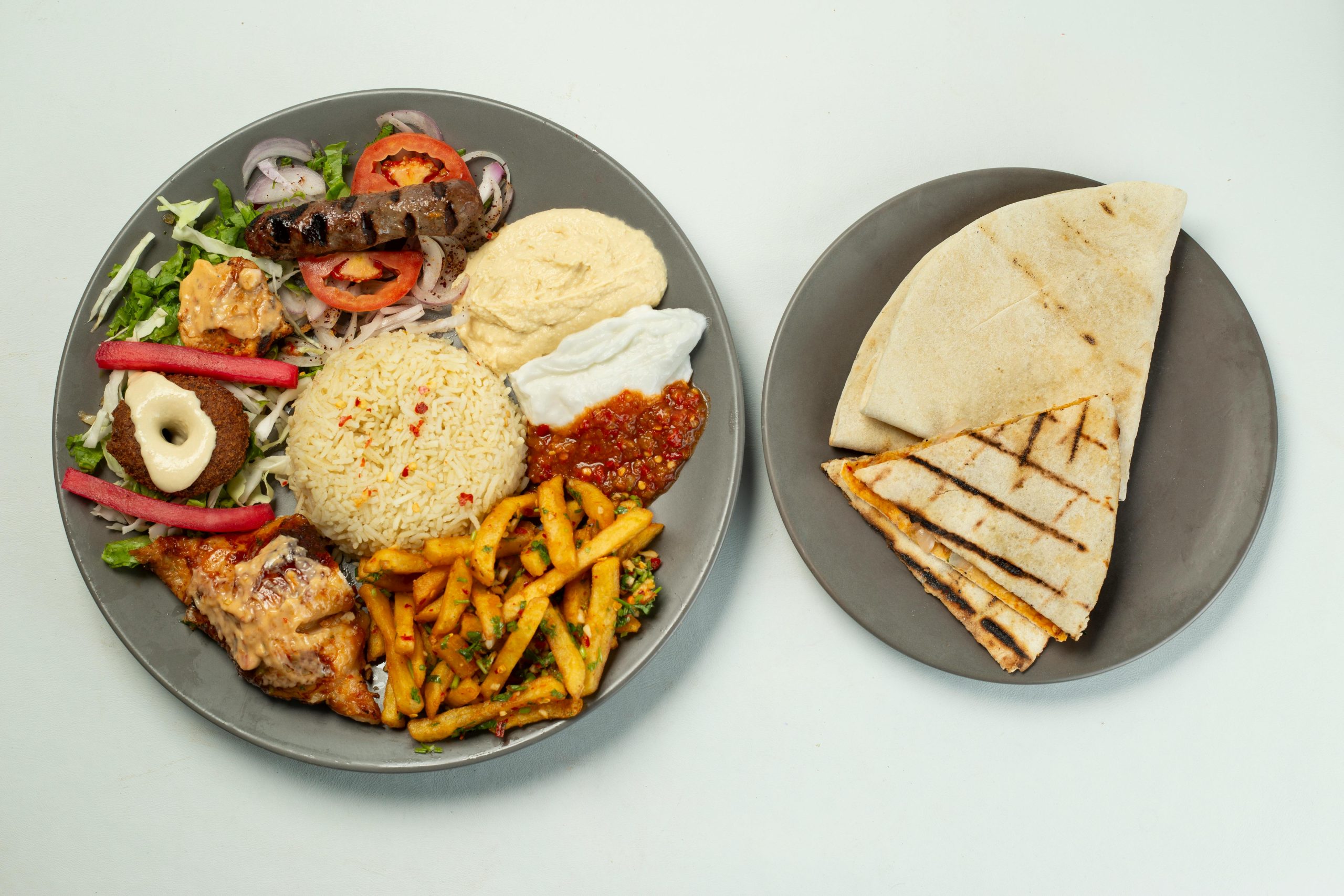1. Incorporate Quinoa for Sustained Energy
Why Quinoa Is a Powerhouse of Energy
Quinoa is often hailed as a superfood and for good reason. It contains complete protein, providing all essential amino acids, which are crucial for sustained energy throughout the day. Unlike simple carbs that give quick boosts followed by crashes, quinoa offers slow-digesting carbs that keep your energy stableâperfect for your 2025 health goals.
Moreover, quinoa is rich in fiber, magnesium, and B-vitaminsâkey nutrients that support energy production in your body. Including it regularly in your meals can prevent midday slumps and improve overall stamina. Many athletes and busy professionals are turning to quinoa as a reliable energy source, especially with current dietary trends emphasizing whole foods.
Consider swapping out rice or pasta for quinoa in your meals. For example, a quinoa salad with colorful vegetables and a drizzle of olive oil makes a delicious, energizing lunch. The versatility and nutritional density of quinoa make it a top recommendation for the best whole food for energy in 2025.
2. Add Nuts and Seeds for Nutritional Power
Healthy Fats and Proteins for Long-Lasting Energy
Nuts like almonds, walnuts, and cashews, as well as seeds such as chia, flax, and sunflower seeds, are excellent sources of healthy fats, fiber, and protein. These nutrients work together to provide a slow-release energy that helps you stay active and alert throughout your day. For 2025, incorporating a handful of nuts or seeds as a snack or topping can be a game-changer.
Research indicates that nuts and seeds can improve cognitive function and reduce fatigue, making them ideal for boosting your energy naturally. They also contain magnesium, which aids in converting food to energy, and antioxidants that reduce oxidative stress.
To maximize their benefits, opt for raw or dry-roasted varieties without added salts or sugars. Adding chia or flax seeds to smoothies, oatmeal, or salads boosts your intake of omega-3s and fiber, further supporting your energy levels.
3. Snack on Fresh Fruits for Natural Sugars
Fruits That Energize and Refresh
Fresh fruits like berries, bananas, apples, and citrus are rich in natural sugars, vitamins, and hydration â all of which are essential for quick energy boosts. Unlike processed snacks with added sugars, fruits supply fiber that moderates blood sugar spikes, providing a steady energy flow.
Bananas, in particular, are a preferred choice for athletes because of their potassium and carbohydrate content, which help prevent muscle fatigue. Berries are packed with antioxidants, which combat inflammation and enhance recovery, keeping your energy levels high.
Making fruits a part of your routineâwhether as a snack, in yogurt, or as a toppingâcan significantly improve your vitality. For 2025, consider cutting out sugary candies and opting for fresh fruit to support your natural energy production.
4. Choose Leafy Greens to Boost Vitality
The Hidden Energy Benefits of Greens
Dark, leafy greens like spinach, kale, and Swiss chard are nutritional giants. They are loaded with iron, calcium, magnesium, and chlorophyllâall vital for energy metabolism and blood health. An iron deficiency, for example, can cause fatigue, so incorporating greens helps ensure your body efficiently produces energy.
Research shows that diets rich in leafy greens are linked to higher energy levels and better cognitive function. Their high antioxidant content can also reduce inflammation and oxidative stress, common causes of tiredness.
To enjoy the benefits, add greens to smoothies, salads, or sauté them with garlic and olive oil. With their versatility and health benefits, leafy greens stand out as a top whole food for energy in 2025.
5. Use Whole Grains for Long-Lasting Fuel
The Power of Whole Grains in Your Diet
Whole grains like oats, brown rice, barley, and whole wheat bread provide complex carbohydrates that supply a slow, steady release of energy. This makes them ideal for maintaining endurance throughout the day, especially when working towards your 2025 health goals.
Wheat and oats are also rich in fiber, which helps regulate blood sugar levels and prevent energy crashes. Including a bowl of oatmeal or whole grain toast for breakfast can set a positive tone for energy stability all day long.
As part of a balanced diet, whole grains work in harmony with other nutrient-dense foods to optimize performance and prevent fatigue. Remember to choose minimally processed options for maximum benefits as the best whole food for energy in 2025.
6. Prioritize Legumes for Protein and Energy
Legumes as a Sustainable Energy Source
Beans, lentils, chickpeas, and peas are powerhouse legumes packed with protein, fiber, vitamins, and minerals. They help stabilize blood glucose and sustain energy levels over longer periods, which is particularly important for busy lifestyles in 2025.
Consuming legumes regularly has been linked to improved energy and metabolic health, and they are also an eco-friendly protein source. For example, chickpeas can be added to salads, soups, or made into hummus for a nutritious snack.
To get the most benefits, soak and cook legumes properly to maximize nutrient absorption and reduce anti-nutrients. Legumes should be a staple in your diet if you’re aiming for consistent energy and overall well-being.
Huge Discount on the Best Certified Organic Whole Food Supplement!
7. Include Sweet Potatoes for Slow Carbs
Sweet Potatoes as a Natural Energy Booster
Sweet potatoes are rich in complex carbohydrates and fiber, making them an excellent option for slow-digesting energy. Their natural sugars provide a sustained release, preventing the common mid-afternoon slump.
They are also high in beta-carotene, vitamins C and B6âsupporting immune function and energy metabolism. Many athletes and health enthusiasts prefer sweet potatoes as a pre- or post-workout fuel.
Roasting or baking sweet potatoes is straightforward and adaptable to countless recipes. Incorporating these tubers into your diet can significantly improve your energy levels in 2025.
8. Hydrate with Natural Coconut Water
Electrolyte-Rich Hydration Support
Staying hydrated is essential for maintaining energy, and coconut water offers a natural way to replenish electrolytes lost during physical activity. Itâs low in sugar but high in potassium, magnesium, and sodiumâkey minerals for nerve transmission and muscle function.
Replacing sugary sports drinks with coconut water assists in avoiding empty calories while supporting energy levels. As hydration directly impacts energy and focus, choosing natural fluids like coconut water aligns well with a whole food for energy approach.
Drink coconut water fresh or look for minimally processed options for maximum benefits. Hydration is a crucial component of your 2025 energy optimization plan.
9. Incorporate Fermented Foods for Gut Energy
The Gut-Energy Connection
Fermented foods like yogurt, kefir, sauerkraut, and kimchi are great for gut health, which directly impacts energy and overall vitality. A healthy gut microbiome improves nutrient absorption and reduces inflammation, leading to better energy production.
Recent studies in 2025 have shown that an optimal gut environment contributes to increased stamina and mental clarity. Incorporating fermented foods into your daily diet can support sustained energy and resilience.
Try adding a serving of kimchi to your meals or swapping out dairy for probiotic-rich yogurt. These foods are tasty and beneficialâpowerful allies for your health journey in 2025.
10. Balance Meals for Optimal Performance
Creating Nutritious, Energy-Boosting Plates
An essential tip for 2025 is to balance your meals with a variety of whole foodsâlean proteins, healthy fats, fiber, and complex carbs. Such balance ensures your body receives all necessary nutrients for continuous energy without spikes and crashes.
For example, a balanced lunch could include grilled chicken, quinoa, leafy greens, and avocado. This combination stabilizes blood sugar and provides sustained energy throughout your busy day.
Practicing mindful eating and portion control can also enhance your energy levels. Remember, the key to lasting vitality is not just what you eat but how you combine your foods for optimal energy production.
Conclusion
Staying energized and achieving your 2025 health goals is all about choosing the right whole foods for energy. Incorporating nutrient-dense foods like quinoa, nuts, fruits, greens, and legumes helps maintain steady energy levels and enhances overall vitality. Remember, the key to sustainable health is a well-rounded diet made from real, whole foods tailored to your needs. By focusing on these 10 tips, you’ll be well on your way to an energized, healthier 2025!
Frequently Asked Questions
1. What is the best whole food for energy in 2025?
While many foods contribute to energy, quinoa stands out due to its complete protein, fiber, and complex carbs for sustained energy, making it a top choice in 2025.
2. How do I incorporate whole food for energy into my daily routine?
Start by swapping processed snacks for fruits and nuts, include whole grains at meals, and ensure your plate features vegetables and legumes for balanced energy throughout the day.
3. Are fermented foods important for energy?
Yes, fermented foods support gut health, which is closely linked to energy and overall vitality. Including yogurt, kimchi, or sauerkraut can boost your energy levels naturally.
4. Can hydration affect energy levels?
Absolutely. Proper hydration with natural options like coconut water helps maintain electrolyte balance and prevents fatigue, essential for high performance in 2025.
5. Why are whole foods better than processed foods for energy?
Whole foods provide sustained energy due to their nutrient density and slower digestion, unlike processed foods with added sugars that cause energy spikes and crashes.




